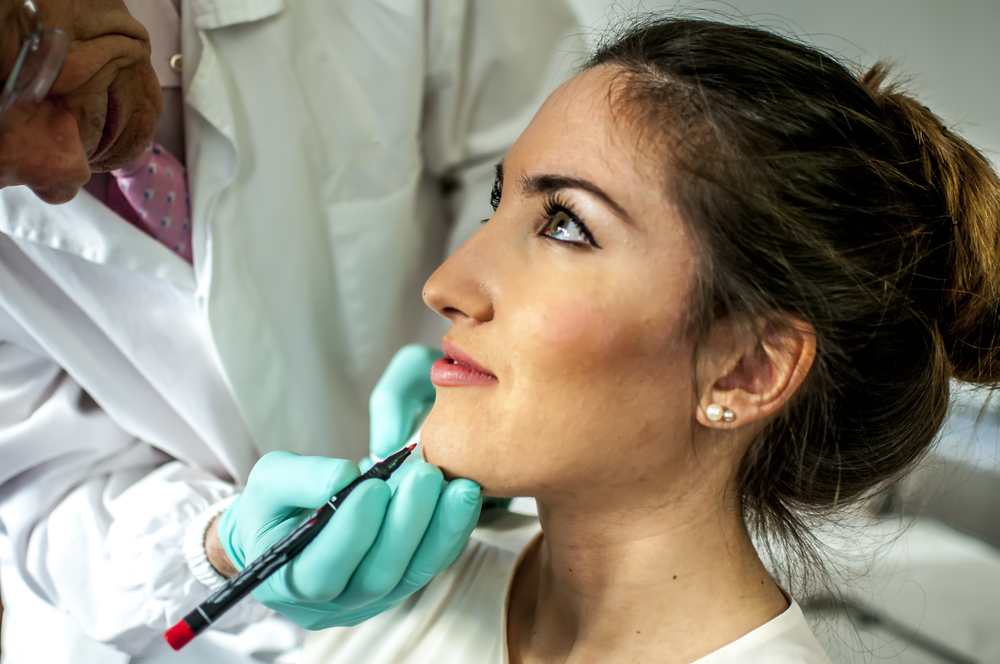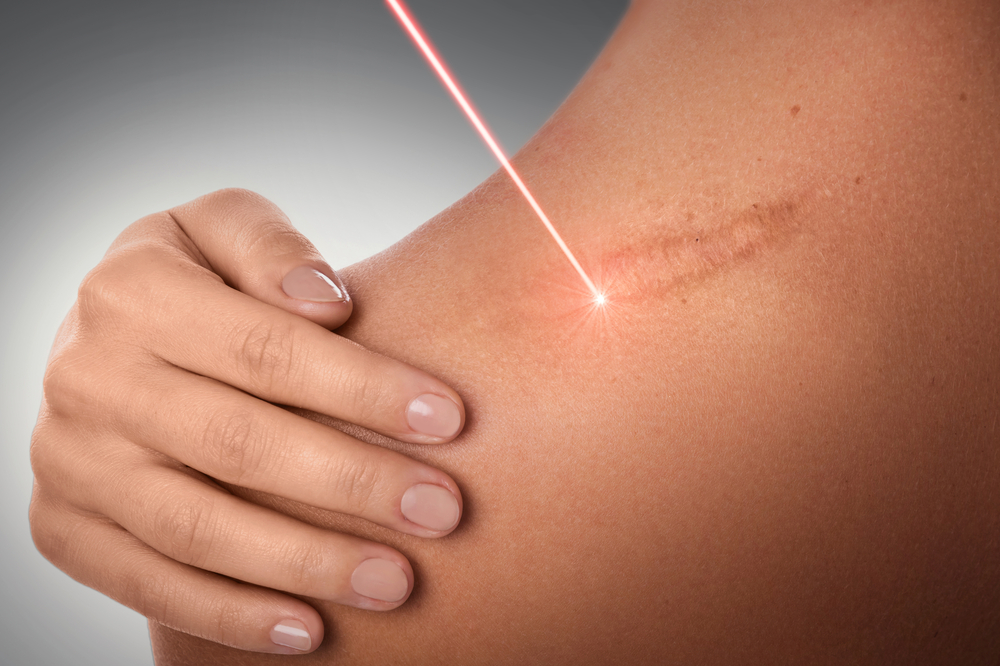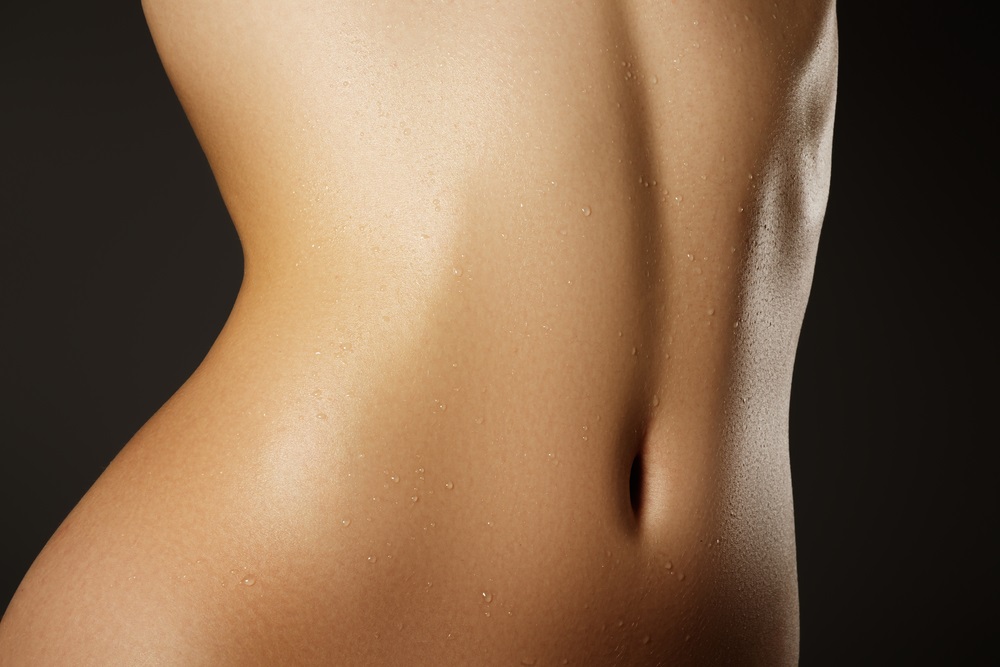This issue is brought to you by Biomed Spa
Jaw reduction surgery permanently narrows the outer portion of the jaw, making it more proportionate with the rest of the face.
What Is Jaw Reduction Surgery?
A well-defined jaw enhances facial beauty, and implies youth, vigor and attractiveness. The lower face is one of the main areas patients are interested in improving when they seek facial rejuvenation.
However, there is a delicate balance between a well-contoured jawline and a heavy set, square jaw. For individuals whose facial aesthetics are affected by an overly prominent jaw or lower third of the face, jaw reduction surgery, also known as jaw shaving, offers a permanent surgical method of reducing the outer portion of the jaw to narrow it and make it more proportionate with the rest of the face.
It is a popular procedure among individuals of Asiatic origin, or those who seek a more feminine looking or slender jaw. Surgeons often reshape the jawline from a “U” shape to a “V” shape.
What Causes an Enlarged Jaw?
A heavy set jaw may be the result of two main causes:
1. Genetics
If square or elongated jaw lines run in your family, then genetics are most likely responsible for your jaw. In this case, surgery offers the most effective means of reshaping your jaw into a more refined shape.
2. Overdeveloped jaw (masseter) muscles
Interestingly, in many cases a pronounced jaw is the result of enlarged jaw muscles. The bulky muscles that sit alongside your jawbone are called the masseter muscles, and assist with chewing and grinding.
While some people are genetically predisposed to larger masseter muscles, others develop them as a result of bruxism or Temporomandibular Joint Disorder (TMJ) whereby the individual habitually grinds or clenches the teeth at night, inadvertently giving the masseter muscles a workout.
TMJ is becoming increasingly common as people experience ever elevating levels of stress in their lives. Unfortunately, however, TMJ often goes untreated as it occurs at night during sleep. The symptoms appear as wear and tear on the teeth, and pain along the jawline, beginning at the temples.
In these cases, a strong jaw can be reduced without surgery. Botox and Dysport can be injected into the muscle, weakening it and causing it to shrink. These injectables can also have a positive effect on TMJ.
What Are the Benefits of Jaw Reduction and Contouring?
Jaw contouring surgery can permanently sculpt a beautiful new jaw line that fits the shape of your face. This means you can move beyond hours spent carefully applying makeup to create the illusion of contours and disguise the size of your jaw.
In addition, jaw reduction surgery offers the following benefits:
- A smaller, more symmetric jawline
- The reduction of the section of the jaw bone directly beneath the ear, causing the face to appear bigger
- Immediate results — following the completion of surgery, the difference will be palpable
- Minor surgery — the procedure can be completed within an hour, and with a brief recovery period
- A more proportionate, balanced face
- A pleasant and more youthful facial aesthetic
- No visible scars
Who Is an Ideal Candidate for Jaw Shaving?
The most suitable candidates for jaw shaving surgery may share the following characteristics:
- A strong or overly conspicuous jaw that is disproportionate with the rest of the face
- A round and wide jaw
- An elongated jaw
- A flat lower jaw line
Those considering jaw reduction surgery should also:
- Be in a good state of physical and mental health
- Have made the decision to undergo surgery for themselves and no-one else
- Have realistic expectations of what surgery can achieve
Finding a Surgeon
Finding the right surgeon to perform your jaw reduction procedure is critical. Some key considerations include the following:
- The surgeon’s area of expertise: Jaw reduction surgery requires specific expertise, such as use of a micro-saw to trim and shape areas of the bone. You should seek out a surgeon who regularly carries out jaw reduction procedures. Feel free to ask prospective surgeons how many jaw shaving surgeries they have carried out, and how often they perform them.
- Evidence of the surgeon’s work and aesthetic ability: Ask to see before and after photos of work they have undertaken on other jaw reduction patients. Photos are invaluable, as they can provide you with a realistic idea of the surgeon’s style, and the improvements you can expect as a result of surgery.
- Professional manner: Ease of communication with your potential surgeon is critical. Your surgeon should encourage you to ask questions, and help you to become aware of any risks or complications you may face as a result of surgery. They should also be open about more sensitive issues such as what happens if you are unhappy with your results, or you require revision surgery.
- Board certification: This is one of the most important considerations. Seek out a surgeon who holds American Board of Plastic Surgery accreditation. This is the most distinguished form of certification available for plastic surgeons, and guarantees that your surgeon is continuing their education by staying current with new advances and techniques, observes the highest standards in patient safety and only uses approved, safe medical facilities in which to carry out procedures.
How Much Does Jaw Reduction Surgery Cost?
On average, you can expect to pay $6,500 for jaw shaving surgery. Costs vary widely, however, based on the following factors:
- The extent of work you require: how much of the jaw bone requires reshaping/resizing
- The complexity of the procedure: the difficulty of the procedure based on your unique facial aesthetics and anatomy
- The geographical location of your surgeon: surgeons in large cities often cost more to reflect higher overheads
- The surgeon’s reputation: acclaimed surgeons who are leaders in their field and have extensive experience charge more for their services
Preparing for Surgery
Being well-prepared for surgery is critical to ensuring a successful outcome and a speedy recovery. All surgery demands that careful attention be dedicated to your physical health, mental wellbeing and planning for your recovery before the procedure.
Gather as much information as you can from your surgeon so you can be well-prepared for the postoperative period and informed about any complications that may arise. Your surgeon will outline any necessary steps that you should undertake before the date of your surgery, and in most cases will make the following recommendations:
- Undergo any medical or laboratory tests to ensure you have no conditions that may endanger you, or compromise the success of the surgery. For example, ECGs (electrocardiograms) may be requested by your surgeon if you are of middle age or older, to ensure your heart is strong enough for the rigors of surgery.
- Give up smoking. Aside from being detrimental to your physical health in general, smoking can severely inhibit the body’s natural healing processes, or even cause tissue death (necrosis) at the incision site. You will be required to cease smoking for at least two weeks before surgery.
- Stop taking any anti-inflammatory medications such as aspirin, Motrin, Ibuprofen and Advil at least two weeks prior to your procedure. These medications thin the blood and prevent blood clotting, which increases the likelihood of bleeding during and after surgery. Also avoid herbal supplements, such as St John’s Wort, as they have the same effect. If you are in any doubt about any medication or supplement that you are currently consuming, seek advice from your surgeon.
- Prepare your support system: ask a loved one or friend to to drive you to and from surgery, and to be available to care for you for at least a few hours when you get home.
- Plan for your recovery. Chewing will be difficult for up to a week after surgery, so have a range of nutritious, soft or liquid foods on hand to eat. Soup, smoothies, mashed vegetables and soft pureed fruits are ideal.
What to Expect During Surgery
Jaw shaving is a relatively quick and straightforward procedure, taking between 30 minutes and one hour to complete. The following steps outline what happens during surgery.
1. General anesthesia
Jaw reduction surgery generally requires general anesthesia. Your surgeon will instruct you on fasting conditions prior to surgery: it is likely you will be asked to eat nothing 8 hours before your procedure.
2. Incisions
Your surgeon will make intraoral incisions (inside your mouth), so no scarring is visible on the outside of your face.
3. Removal of excess bone/muscle/fat
A micro-saw or laser saw is used to cut the marked areas of prominent bone, and reshape the jaw contour. The saw is curved to achieve a well-rounded contour. Laser saws boast the advantage of less damage to nearby tissue and cells, less bleeding, and a reduced probability of cracks in the jaw bone.
In some cases, a cortical fracture may be performed to surgically remove the outer layer of the jaw bone.
In other cases, individuals who have an excessively developed masseter muscle will have this muscle removed. Some subcutaneous fat may also be removed to further thin the jaw line.
4. Stitches
The incisions are closed with dissolvable stitches.
Once you have awoken and your nurse is confident that you have recovered from the effects of anesthesia, you will be discharged to go home.
Recovery
Jaw reduction surgery represents a major form of plastic surgery of the face. It is common to experience the following symptoms; however, your surgeon will prescribe pain relief to help manage any discomfort.
- Swelling is entirely natural, and will vary from person to person. Use cool compresses (if your surgeon approves) to help keep bruising, swelling and pain to a minimum. Swelling will peak 2-3 days after surgery, and will take between 6 weeks and 3 months to completely subside.
- Numbness is common. Most patients will experience some form of numbness close to the incision site. Numbness is usually temporary.
It is extremely important to take good care of yourself to prevent infection and accelerate your recovery. Your surgeon will provide a detailed guide to your postoperative recovery, which will likely include the following recommendations:
- Keep your face elevated as much as possible, even when sleeping. Elevation is key to reducing swelling.
- Make sure you move around or go for short walks as soon as you are able to encourage blood circulation. Gentle movement promotes healing.
- Consume a liquid diet for a week after surgery. Drinking rather than chewing food prevents trauma to the jaw area, and is less painful. Hard foods should only be consumed one month after surgery.
- You may be required to wear a compression bandage around your face. You are recommended to wear the bandage at all times for the first three days, and use it at home or while sleeping in the period thereafter. Take care when washing your face or hair.
- Use an antibacterial mouth rinse regularly to keep your mouth and incision sites clean, and decrease the possibility of infection occurring.
- Avoid strenuous activities and heavy lifting for a month after surgery.
- Refrain from smoking or consuming alcohol for at least two weeks after surgery.
- Keep any follow up appointments with your surgeon. These enable your surgeon to check on your progress, and also allow you to ask questions or voice concerns.
You should be able to return to work and social life 7-10 days after surgery, but may still exhibit some swelling. You should refrain from exercise until the fourth week after surgery.
Jaw Reduction Surgery Results
The results of jaw reduction procedure are permanent. As noticeable swelling after surgery is common, it will take between several days and a week before you are able to remove the compression bandage and enjoy the results, and in some cases months before all swelling subsides.
Once swelling has subsided, the new contours of your jawline will be apparent. If you notice any changes in your jaw line as it heals, or experience any unusual pain, be sure to let your surgeon know.
Risks and Complications
Jaw reshaping surgery carries both the general risks attached to invasive surgical procedures, and some more specific risks. It is important to point out that in the hands of a skilled, board-certified surgeon, risk is significantly mitigated; nonetheless, there is always a level of risk attached to surgery.
Being informed about any risks or complications that could occur is vital to guiding your decision on whether or not surgery is right for you.
Some of the more general risks attached to surgery include:
- Complications arising from general anesthesia
- Hematoma (pocket of blood that looks like a swollen bruise)
- Deep vein thrombosis
- Pulmonary embolism
- Dissatisfaction with results
- Seroma (pooling of fluid beneath the skin, resulting in a blister like appearance)
Some of the more specific risks attached to jaw reduction surgery include:
- Infection
Infections are rare, but possible as the incision sites are located intraorally (in the mouth). It is vital to keep the mouth scrupulously clean during your recovery.
- Numbness
Partial numbness of the jaw can occur due to nerve damage. In most cases this is temporary, but in rare cases, it can endure for some months.
- Asymmetry
Achieving perfect symmetry is very difficult. Even if the surgeon takes the utmost care in marking out the areas on the jaw line that he or she will trim , asymmetry may still occur. If this does happen, however, it can be corrected in a secondary surgery.
Non-Surgical Alternatives
For those who wish to avoid jaw reduction surgery but still wish to reshape their jaw, there are non-invasive options available. Botox and Dysport can effectively contour and slim the lower third of the face by relaxing the appearance of a thick-set, square jaw. These injectables weaken the masseter muscle, causing it to shrink. This variation of nonsurgical face contouring can also be used to correct facial asymmetry around the jawline.
However, this procedure is most effective for patients who suffer from temporomandibular joint dysfunction as it will shrink the masseter muscle. For patients who have large jaw bones, non-surgical alternatives may not be as effective. Consult with our medical review team with experience in using injectables around the jawline to check if you are a suitable candidate.
Benefits:
- The procedure can be completed in a matter of minutes
- There is no downtime, and you can return to your everyday activities right away
- The procedure offers a more subtle, natural shift in your appearance
- Patients suffering from TMJ often report better sleep as their ability to grind or clench their jaw is inhibited.
Disadvantages:
- The full results will not be apparent until 2-3 weeks after the procedure has been completed
- Injectables last between 3 months and 1 year, depending on how your body metabolizes the product. However, if you maintain treatments, you will be able to go longer between sessions as your masseter muscle will remain weakened.
- The results are not as dramatic or transformative as those of jaw reduction surgery.
Frequently Asked Questions
Will the skin adapt to the new shape of my jaw?
Younger patients with good skin elasticity should see the skin adjust to the new jaw line. In older patients, readaptation to the new jaw shape may not be as straightforward, and there may be some sagging skin. There are procedures, both invasive and non-invasive, that your surgeon can recommend to address any post-surgical skin laxity.
Can a facelift be performed in conjunction with jaw reduction surgery?
Jaw reduction surgery can result in extensive swelling, which may require months to fully subside. For this reason, it is not recommended to undergo facelift surgery at the same time as jaw reduction as the results will be suboptimal. Taking 4 months between the operations will guarantee a better final outcome.
Can the jaw bone grow back once it has been cut or shaved down?
No, the bone cannot grow back. The masseter muscle that lies along the jaw, however, can grow thicker with repetitive clenching and grinding.
What happens to the stitches in my mouth after surgery?
The stitches dissolve after 5-7 weeks. They do not require surgical removal.
After jaw shaving, can dental implants still be inserted?
The bone that is removed is taken from the lower edge of the jaw, away from the teeth. The surgery will not bear any impact on any dental work you need to undergo.
Is jaw reduction suitable for facial feminization?
If you would like to develop a more soft and feminine facial aesthetic, jaw reshaping is instrumental to facial feminization. It is a very popular procedure with individuals currently undertaking a gender or sex change from male to female.









